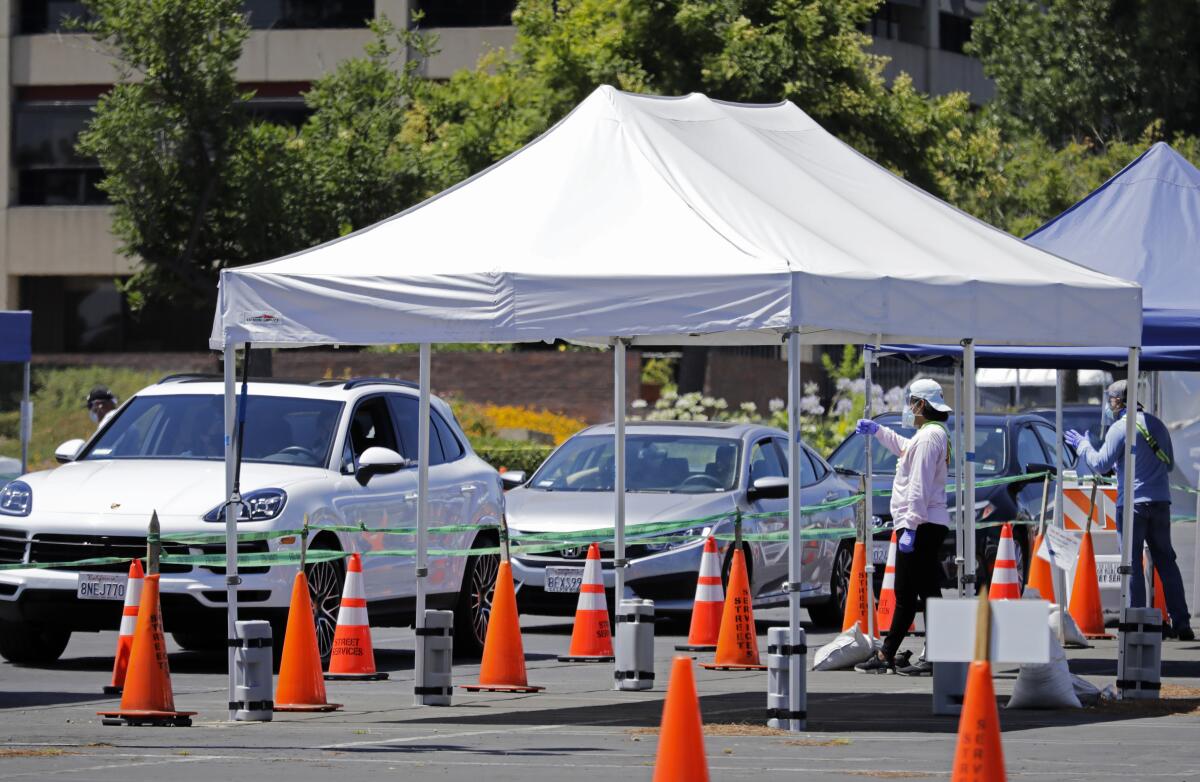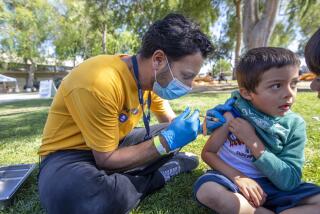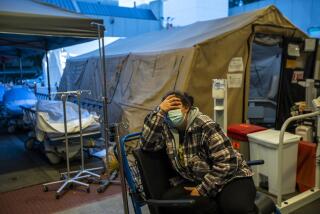Op-Ed: We tell our COVID-19 patients to self-isolate, but what happens when that’s not possible?

Working in the emergency department of a big city hospital gives front-line care providers like us a unique, real-time view of the rapidly changing face of the COVID-19 pandemic. We see encouraging victories in patient care every day. But we also see missed opportunities to slow the current explosion of cases and deaths.
One kind of patient story doctors see every day in emergency rooms across Los Angeles spotlights a huge gap in our current response and identifies a way we might reverse the rising tide of patients that risks drowning our hospitals.
The patients we’re talking about come in with all the symptoms of COVID-19 — fever, cough, weakness, difficulty breathing. Some have even gotten positive test results before coming to the hospital. But they aren’t sick enough to need to be admitted to the hospital, so we do what we can and send them home with instructions for how to take care of themselves.
The directions we give patients include the current Centers for Disease Control and Prevention guidelines, which recommend self-isolation for a minimum of 10 days after the onset of symptoms and a minimum of 24 hours without fever.
Self-isolation is crucial in light of a recently published CDC study, which found that familial spread was the most common mode of COVID-19 disease transmission, accounting for 45% of cases. To stop the spread, it’s imperative that infected COVID-19 patients isolate themselves from others until they are no longer contagious.
But often, when we tell the patients they need to stay separated from other members of their households, they look at us with incredulity.
We live in a city where the cost of housing is high, and many residents live in cramped and crowded conditions. We often see patients who live with half a dozen or more family members and share a single bathroom. Remaining truly isolated is simply not possible in such conditions.
Doctors take an oath “to do no harm,” but we often find ourselves with no alternative to discharging patients with treatment plans they have no ability to follow. Doctors do this in every hospital emergency department in Los Angeles every day.
In the setting of this pandemic, failing to follow quarantine recommendations will inevitably have consequences, sometimes fatal ones. We need to provide patients with a better alternative than to carry the virus home to infect loved ones as they try vainly to follow doctor’s orders.
So what do we do?
At the peak of the pandemic, New York City’s hotels opened their doors to house healthcare workers and COVID-positive patients so that they could safely quarantine or isolate away from neighbors and family members. Patients in isolation were provided with food and daily medical check-ins. New York City, which surpassed 18,000 COVID deaths, is now recording only a fraction of L.A.’s total each week.
In Los Angeles County, programs such as Project Roomkey currently support the vulnerable homeless population. Ideally, such efforts could be scaled to cover people suffering from COVID-19 who need temporary emergency shelter in order to isolate themselves. Hospitals could then offer lodging vouchers to COVID-19 patients with no other way to self-quarantine.
L.A. officials proposed expanding a medical sheltering program as early as March 30, and Dr. Erika Flores Uribe of L.A. County’s Department of Health Services told The Times last week that the county is trying to help people with quarantine plans. But she acknowledged we aren’t there yet. She said she has heard from people isolating themselves in cars to keep their families safe in tight living quarters. Sleeping in a car is no way to recover from a deadly disease.
Philanthropists, local businesses and community leaders have an opportunity to save patient lives and support communities of color, which are disproportionately affected by the coronavirus. We need to coordinate efforts with local policymakers, front-line medical personnel, hospitals and testing centers to provide temporary emergency shelter options for COVID-19 patients and those suspected of being infected for the duration of time they can transmit the virus.
This proposed intervention, coupled with a concerted effort by the general public to wash hands and wear protective face coverings when around others, could help rapidly reverse the course of the pandemic in Los Angeles County.
Catherine Weaver and Judy Choe are emergency medicine physicians in Los Angeles. Emergency medicine physicians Mark Morocco and Eric Savitsky contributed to this article.
More to Read
A cure for the common opinion
Get thought-provoking perspectives with our weekly newsletter.
You may occasionally receive promotional content from the Los Angeles Times.










